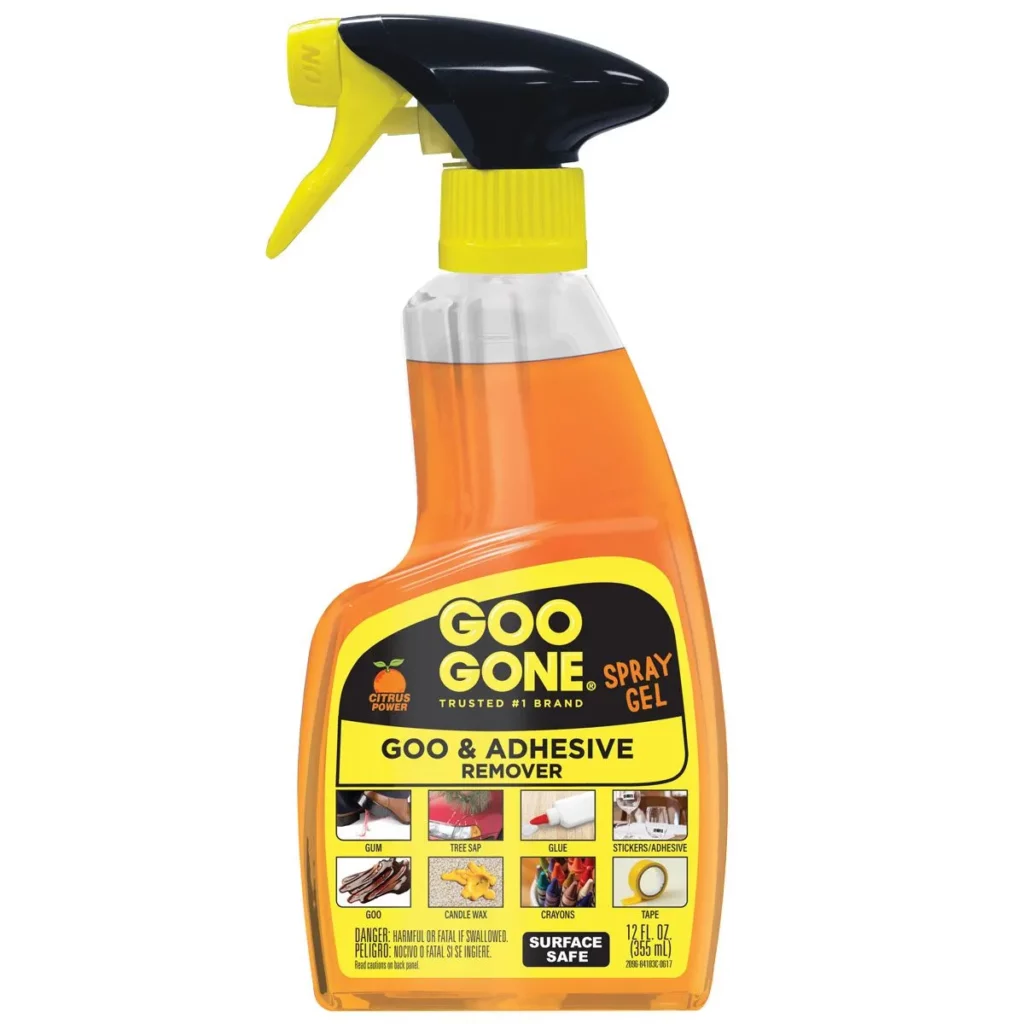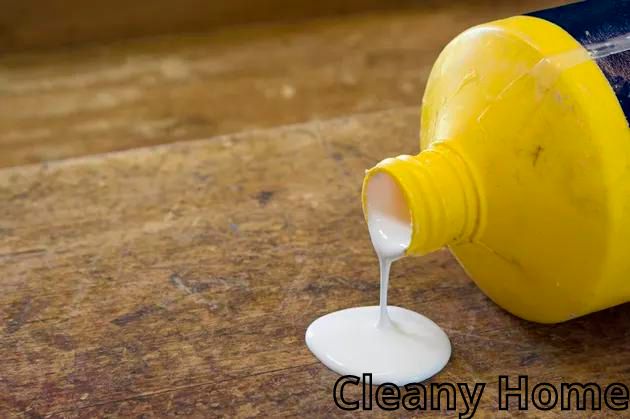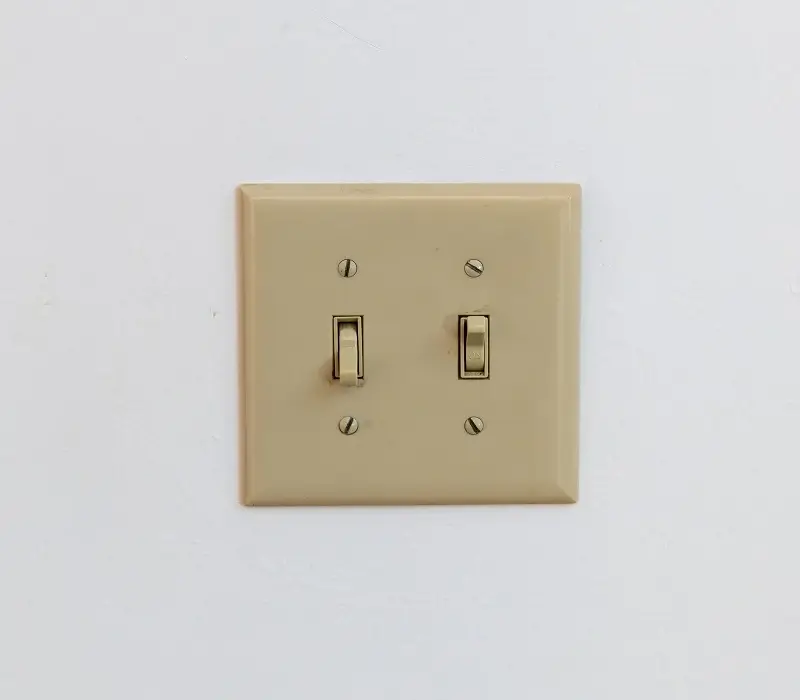
We all agree that Goo Gone is one of the most popular cleaners on the market. It’s simple to use, requires little elbow grease, and offers quick results. It’s also an effective option against crayon marks, glue, adhesive, etc. So how to remove goo gone residuer from different surfaces?esidue
Nevertheless, since Goo Gone is an oily substance, it tends to leave a greasy residue behind. The oily residue is simple to remove, yet, it also requires its own cleaning method, which we will discuss below.
The cleaning guide we’re about to share with you is effective on practically any surface. Before using any of the following tips, though, make sure the surface you wish to clean can withstand the product you want to use.
Table of Contents
How to Remove Goo Gone Residue. The Steps
Absorb the Excess
Take a clean cloth (preferably white) or a towel and blot as much Goo Gone as you can. Once you’ve absorbed all the excess possible, it’s time for you to proceed to the next step.

Detergent
Soak a cloth or towel in mild laundry detergent and apply it to the greasy part. Use another towel soaked in water to wipe out the whole surface area. You can repeat the procedure as many times as it takes to get all the residue.
Commercial Grease Cleaner
If the detergent method doesn’t work, you can use a commercial cleaner like glass cleaner to clean your windows, for example.
This sort of product is made specifically for dissolving oil and grease without creating streaks. It’s thus our recommended option when you decide to put your wallet into action.
All you have to do is apply the cleaner to the stained area. After that, using a cloth, scrub the area using circular motions. Then, using another cloth soaked in water, rinse the whole area and wipe dry.
WD-40
If you’re still wondering how to clean Goo Gone residue, then it’s probably time you give WD-40 a shot. Start by spraying the whole area with WD40. Let the product work for about 5 minutes. Then, using a damp cloth, rinse the entire surface.
WD-40 help breaks down oil by loosening its molecules. Nevertheless, if you’re not sure that the surface you wish to clean can handle WD-40, we recommend trying it on a hidden section first.
Cornstarch/Baby Powder
If you have Goo Gone residue on your precious carpet or sofa, follow these steps. Thanks to the oily nature of Goo Gone, it can easily be absorbed by baby powder or cornstarch.
Simply sprinkle a liberal amount of the powder of your choice over the soiled area. Leave the powder for a few minutes to absorb the greasy residue before wiping it off.
This approach can be used on most surfaces. However, when using it on a carpet, be sure to vacuum thoroughly afterward to remove any of the powder that may have been left behind.
Rubbing Alcohol
Soak a cotton ball or a piece of fabric with Rubbing Alcohol. Then, start dabbing the Goo Gone residue until everything is gone. If the first application didn’t remove all the oily residue, you could repeat this operation.
Conclusion
As you may have seen, Goo Gone residue is relatively easy to remove. The main thing to remember is always to do a test of the product you want to use in an inconspicuous area of the surface you wish to clean. For example, WD-40 shouldn’t be used on door hinges, locks, polycarbonate, and clear polystyrene plastic.
It’s always a pleasure to hear from you. So, if you decide to try one of these tips to clean Goo Gone residue, we will highly appreciate knowing which one has caught your attention.
Also, if you’re used to cleaning your house using DIY techniques, we’ve made a guide on how to remove soap residue from the carpet. As you probably know, soap is often the go-to option when cleaning most surfaces, and when not used properly, it can leave residues that attract dirt quickly.
How do you clean surface after Goo Gone?
To clean a surface after using Goo Gone, rinse the area with warm, soapy water, wipe it with a clean, damp cloth, and dry it with a clean, dry cloth. If residue remains, use rubbing alcohol or vinegar to gently rub the area in a circular motion, then rinse and dry as before. Always check the manufacturer’s instructions for the surface being cleaned to avoid damage.
Does alcohol remove Goo Gone?
Yes, alcohol can be used to remove Goo Gone residue. Apply a small amount of rubbing alcohol to a clean cloth and gently rub the residue in a circular motion. Rinse the area with warm, soapy water, and dry it with a clean, dry cloth.
How do you get goof off residue off plastic?
To remove Goof Off residue from plastic, clean the area with soap and water, apply rubbing alcohol or vinegar to a clean cloth and rub the residue in a circular motion. Rinse the area with warm, soapy water and dry it. If residue remains, use a plastic-safe cleaner like a baking soda and water paste to gently scrub the area, rinse with warm water, and dry. Always check the manufacturer’s instructions for the plastic being cleaned to avoid damage.
Does vinegar remove goo?
Yes, vinegar can be used to remove gooey substances. Its acidic properties make it effective in breaking down adhesives and sticky residues. Apply a small amount of vinegar to a clean cloth and rub the affected area in a circular motion until the goo is removed. Rinse with warm water and dry the area with a clean, dry cloth.
What should you not use Goo Gone?
Do not use Goo Gone on unpainted wallpaper or drywall, delicate fabrics or materials, rubber or certain types of plastics, unfinished wood or unsealed stone surfaces, coated or painted surfaces, including automotive paint, appliances or electronics, or eyeglasses or contact lenses. Always check the manufacturer’s instructions and test in an inconspicuous area before using Goo Gone on any surface.
We're an affiliate
We hope you love the products we recommend! Just so you know, CleanyHome.com is a participant in the Amazon Services LLC Associates Program, an affiliate advertising program designed to provide a means for sites to earn advertising fees by linking to Amazon.com.

![How to Get Rid of Spiders in the Basement [9 Effective Tips]](https://supercleanworldall.com/wp-content/uploads/2021/07/depositphotos_125531742-stock-illustration-the-pattern-with-spiders.jpg)

thank you
Pingback: How to Remove Latex Paint From Wood Floors [5 Easy Tips] | Cleany Home